Gold is a chemical element with the symbol Au (from Latin: aurum “gold”) and an atomic number of 79. Gold is a dense, soft, shiny metal and the most malleable and ductile metal known. Pure gold has a bright yellow color and luster traditionally considered attractive, which it maintains without oxidizing in air or water. Chemically, gold is a transition metal and a group 11 element. It is one of the least reactive solid chemical elements. The metal therefore occurs often in free elemental (native) form, as nuggets or grains in rocks, in veins and in alluvial deposits. Less commonly, it occurs in minerals as gold compounds, usually with tellurium.
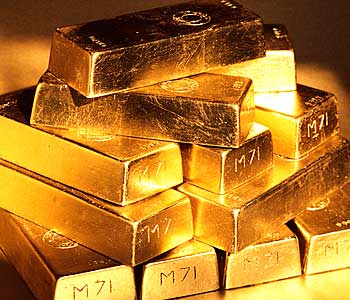 Gold
Gold
Gold resists attacks by individual acids, but it can be dissolved by the aqua regia (nitro-hydrochloric acid), so named because it dissolves gold. Gold also dissolves in alkaline solutions of cyanide, which have been used in mining. Gold dissolves in mercury, forming amalgam alloys. Gold is insoluble in nitric acid, which dissolves silver and base metals, a property that has long been used to confirm the presence of gold in items, giving rise to the term the acid test.Gold has been a valuable and highly sought-after precious metal for coinage, jewelry, and other arts since long before the beginning of recorded history.
Gold standards have been the most common basis for monetary policies throughout human history, being widely supplanted by fiat currency only in the late 20th century. Gold has also been frequently linked to a wide variety of symbolisms and ideologies. A total of 165,000 tonnes of gold have been mined in human history, as of 2009. This is roughly equivalent to 5.3 billion troy ounces or, in terms of volume, about 8500 m3, or a cube 20.4 m on a side. The world consumption of new gold produced is about 50% in jewelry, 40% in investments, and 10% in industry.
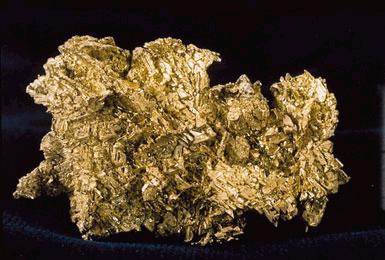 Gold Ore
Gold Ore
Besides its widespread monetary and symbolic functions, gold has many practical uses in dentistry, electronics, and other fields. Its high malleability, ductility, resistance to corrosion and most other chemical reactions, and conductivity of electricity led to many uses of gold, including electric wiring, colored glass production and even gold leaf eating.
Gold is purified through a process of high temperature heating or chemical exposure, depending on the purity of the mined gold. If the gold is a low grade ore, then it is broken up into chunks that are then put in carefully lined pads and treated with a dilute cyanide solution, which dissolves the gold.
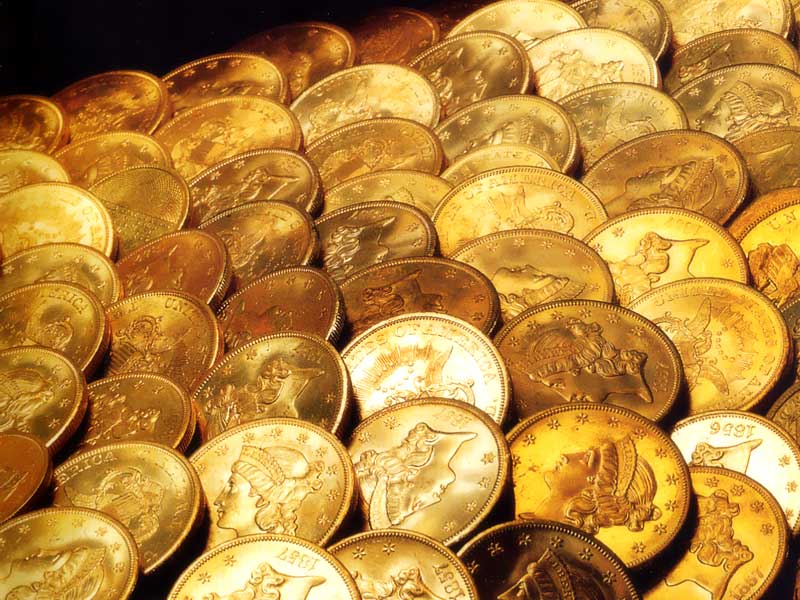 Gold Coins
Gold Coins
For high grade ore, the metal is sent to a grinding mill and made into a powder. Refractory ore contains carbon and is heated to over 1000 degrees F, which removes sulfide and carbon. The resulting oxide ore is directed to the leaching circuit. Sulfide refractory ore that contains no carbon is oxidized in an autoclave to free gold from sulfide minerals, then it is sent to the leaching circuit.
At this point, treated high grade ore is leached with cyanide and gold is collected onto activated carbon with the cyanide solution being recycled. The gold-carbon mixture is put in a vessel where the gold is removed chemically. The carbon is then recycled. The gold is then extracted from the solution by electrolysis or chemical substitution.At this point, the gold is melted into dore bars composed of 90 percent gold. The bars are then sent to an external refinery to make them 999.9 parts per thousand pure gold.
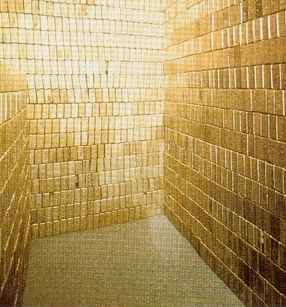 Gold Bars Bricks
Gold Bars Bricks
According to Hoover and Strong, a refiner and manufacturer of precious metals, they produce 98 percent pure gold using the Miller process. After a sample of treated impure gold has been tested in a lab for purity, the gold is melted in a furnace, then chlorine is bubbled through the liquid. The chlorine attaches to elements in the gold that then become solid and move toward the top of the furnace. They are skimmed off. Electrolysis is ultimately used to purify the gold.
Gold is a type of savings that already thousands of years people done. You must be have seen the collection of gold jewelry who your parents stored. Generations before you, begin to grandparents to parents is used to store the gold. Collection the gold used that can be cash down anytime when needed. Gold like the wine, the longer it kept the price will be higher. Slowly but surely the gold prices always go up. Rarely has decreased the price of gold. Gold is attractive investment option for anyone. The advantage of gold investment is a strong durability against inflation. The price of gold has never fallen due to inflation, just the opposite. When inflation rises in gold prices rose.
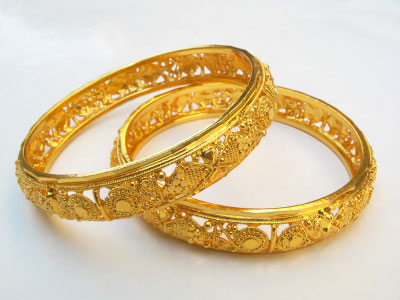 Gold Bangles
Gold Bangles
It is the reason backgroud the people to buy gold when inflation. When Japan invaded China, gold purchases soared high and the choice proved to be true, because when the normal state of gold deposits can be sold at high prices. But before investing in gold, you should first consider what type of gold you would pick. Investing in gold like other investments such as stocks and mutual funds. Gold leaf can be beaten thin enough to become translucent.
The transmitted light appears greenish blue, because gold strongly reflects yellow and red. Gold readily creates alloys with many other metals. Common oxidation states of gold include +1 (gold(I) or aurous compounds) and +3 (gold(III) or auric compounds). Gold ions in solution are readily reduced and precipitated out as gold metal by adding any other metal as the reducing agent. High quality pure metallic gold is tasteless and scentless, in keeping with its resistance to corrosion (it is metal ions which confer taste to metals).
Gold has been widely used throughout the world as a vehicle for monetary exchange, either by issuance and recognition of gold coins or other bare metal quantities, or through gold-convertible paper instruments by establishing gold standards in which the total value of issued money is represented in a store of gold reserves.
Today, gold mining output is declining. After World War II gold was replaced by a system of convertible currency following the Bretton Woods system. Gold standards and the direct convertibility of currencies to gold have been abandoned by world governments, being replaced by fiat currency in their stead. Pure gold is too soft for day-to-day monetary use and is typically hardened by alloying with copper, silver or other base metals. The gold content of alloys is measured in carats (k). Pure gold is designated as 24k. English gold coins intended for circulation from 1526 into the 1930s were typically a standard 22k alloy called crown gold, for hardness (American gold coins for circulation after 1837 contained the slightly lower amount of 0.900 fine gold, or 21.6 kt).
Eighteen-carat gold containing 25% copper is found in antique and Russian jewelry and has a distinct, though not dominant, copper cast, creating rose gold. Fourteen-carat gold-copper alloy is nearly identical in color to certain bronze alloys, and both may be used to produce police and other badges. Blue gold can be made by alloying with iron and purple gold can be made by alloying with aluminium, although rarely done except in specialized jewelry.
Fourteen and eighteen carat gold alloys with silver alone appear greenish-yellow and are referred to as green gold. White gold alloys can be made with palladium or nickel. White 18-carat gold containing 17.3% nickel, 5.5% zinc and 2.2% copper is silvery in appearance. Alternative white gold alloys are available based on palladium, silver and other white metals, but the palladium alloys are more expensive than those using nickel. High-carat white gold alloys are far more resistant to corrosion than are either pure silver or sterling silver. The Japanese craft of Mokume-gane exploits the color contrasts between laminated colored gold alloys to produce decorative wood-grain effects.
Even some modern esotericists and forms of alternative medicine assign metallic gold a healing power. Some gold salts do have anti-inflammatory properties and are used as pharmaceuticals in the treatment of arthritis and other similar conditions.[16] However, only salts and radioisotopes of gold are of pharmacological value, as elemental (metallic) gold is inert to all chemicals it encounters inside the body. Gold alloys are used in restorative dentistry, especially in tooth restorations, such as crowns and permanent bridges. Colloidal gold preparations (suspensions of gold nanoparticles) in water are intensely red-colored, and can be made with tightly controlled particle sizes up to a few tens of nanometers across by reduction of gold chloride with citrate or ascorbate ions. Colloidal gold is used in research applications in medicine, biology and materials science. Colloidal gold is also the form of gold used as gold paint on ceramics prior to firing.
Gold, or alloys of gold and palladium, are applied as conductive coating to biological specimens and other non-conducting materials such as plastics and glass to be viewed in a scanning electron microscope. Gold also produces a high output of secondary electrons when irradiated by an electron beam, and these low-energy electrons are the most commonly used signal source used in the scanning electron microscope.
You might also like
| Types of Materials Metals: Metals are elements... | What is Silver? Silver is a metallic chemical element... | Microstructure of Metals Microstructure is defined as the... | Tungsten In 1779 Peter Woulfe deduced the existence... |


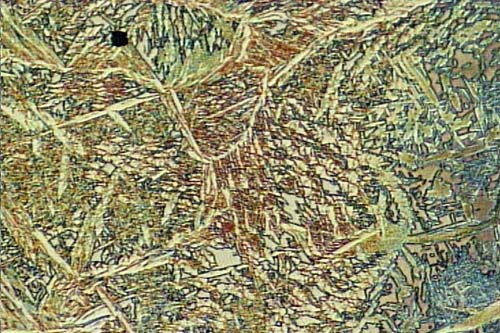
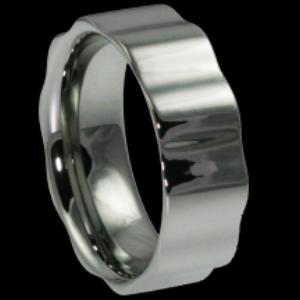
 Alloy Suppliers
Alloy Suppliers
 Aluminum
Aluminum
 Aluminum Extrusions
Aluminum Extrusions
 Copper-Brass-Bronze
Copper-Brass-Bronze
 Nickel
Nickel
 Magnets
Magnets
 Stainless Steel
Stainless Steel
 Stainless Steel Tubing
Stainless Steel Tubing
 Steel Service Centers
Steel Service Centers
 Titanium
Titanium
 Tungsten
Tungsten
 Wire Rope
Wire Rope